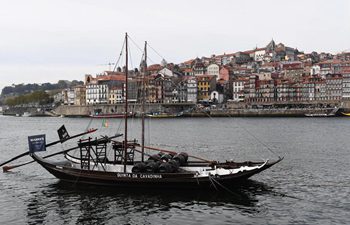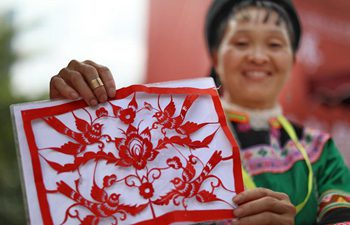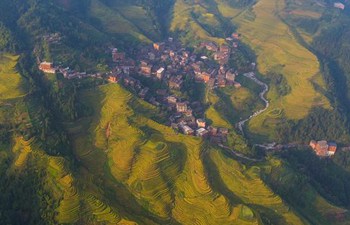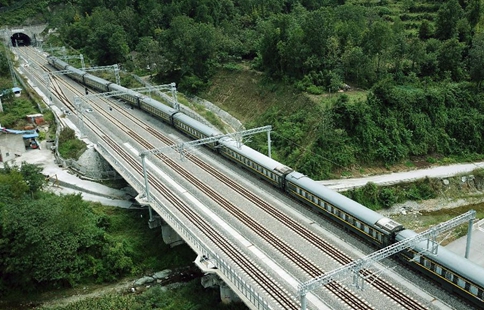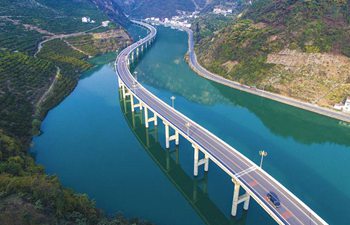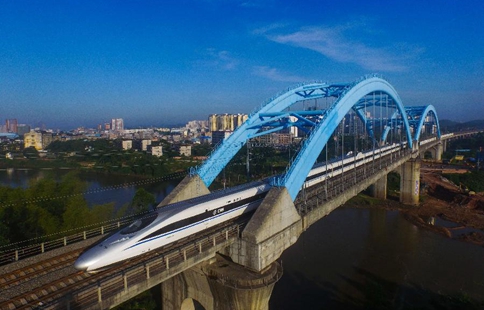
Construction workers work on Padma Bridge in Bangladesh, on Sept. 30, 2017. Bangladesh's largest Padma Bridge is now visible as its very first span was successfully installed Saturday by the engineers of the China Major Bridge Engineering Company. (Xinhua/Liu Chuntao)
DHAKA, Sept. 30 (Xinhua) -- Bangladesh's largest Padma Bridge is now visible as its very first span was successfully installed Saturday by the engineers of the China Major Bridge Engineering Company.
Bangladeshi Road Transport and Bridges Minister Obaidul Quader among others witnessed the installation process at a site of the bridge on Saturday morning.
With the installation of the span, first among the 41 spans to be installed on the 6.15-km bridge, the minister said the Padma Bridge is now visible.
About 50 percent work of the bridge project has so far been completed, said the minister, adding that all other spans would be set up gradually.
It took about two hours for the engineers to complete the installation work of the 150-meter long span on piler-37 and piler-38.
In December 2015, Prime Minister Sheikh Hasina inaugurated the main works of Padma Bridge project, the biggest of its kind for the country, by unveiling its foundation plaque.
When it comes into operation, the bridge will ease pressure on the country's premier seaport in Chittagong, 242 km southeast of capital Dhaka, as it will bolster the second largest Mongla seaport in Bagerhat district, 178 km southwest of the capital city, experts say.
In June 2014, the Bangladeshi government awarded China Major Bridge Engineering Company Limited a 1.55-billion-U.S.-dollar contract to build core structure of the Padma Bridge project which is to be completed in four years.
The 25-meter-wide and 10-km-long bridge will be built over Padma River, one of the three major rivers in Bangladesh.
About 6.15 km of the bridge is being built over the river while the remaining part on both banks.
The bridge will shorten the travel time between the capital and the southern city of Khulna from the current 13 hours to only about three hours.
The bridge is expected to promote trade and economy of Bangladesh, which, according to a World Bank report, has the potential to end extreme poverty by 2030.
Bangladesh is strategically located between China, India and Southeast Asia, making it well placed to become a trading and manufacturing hub, experts say.
Apart from connecting nearly 30 million people in Bangladesh's southwest region to the rest of the country, the bridge will enhance regional trade and collaboration along the Asian highway No. 1 and the Trans-Asian railway network.
The bridge is among the six projects that are under direct supervision of the Fast Track Project Monitoring Committee headed by the prime minister.




